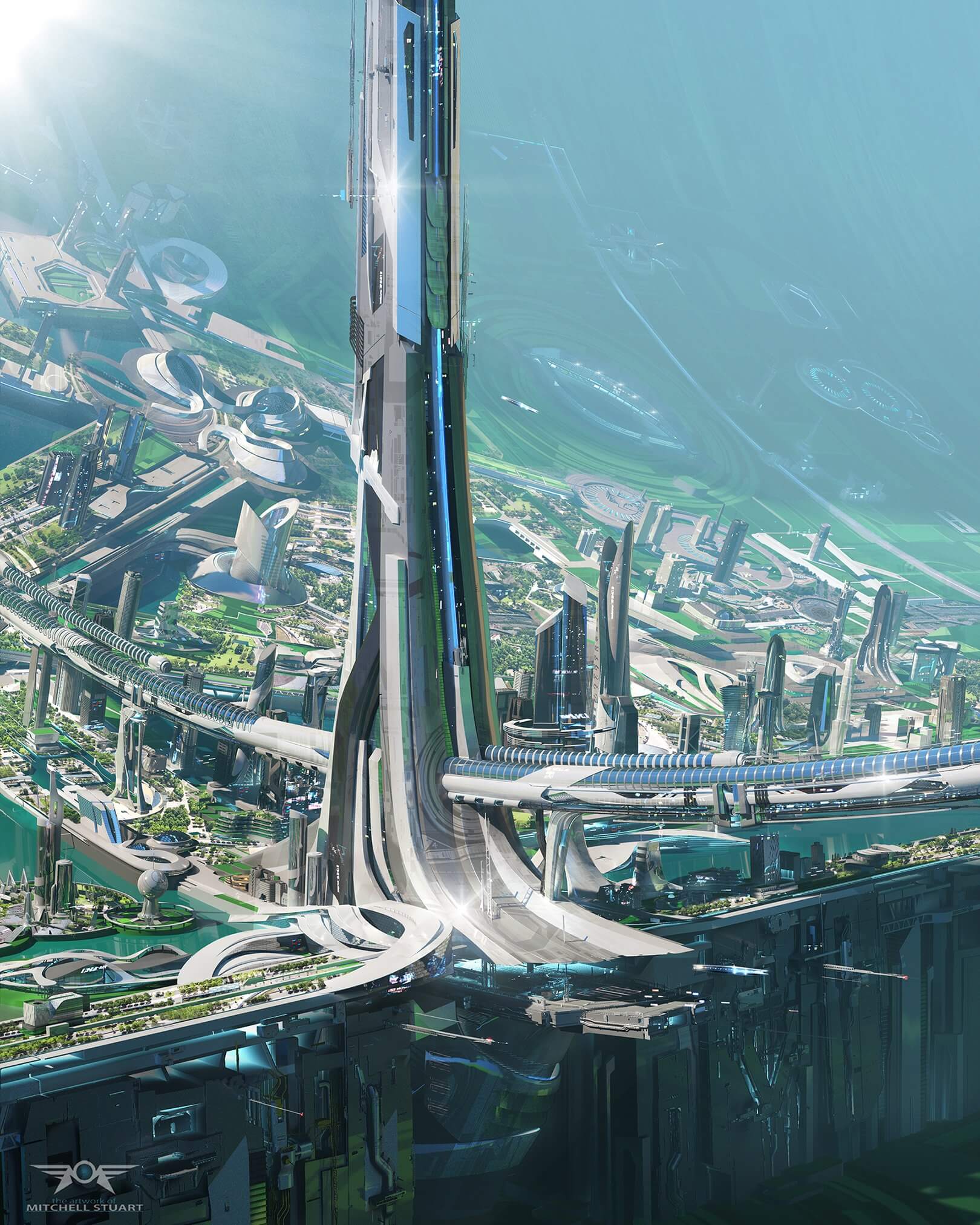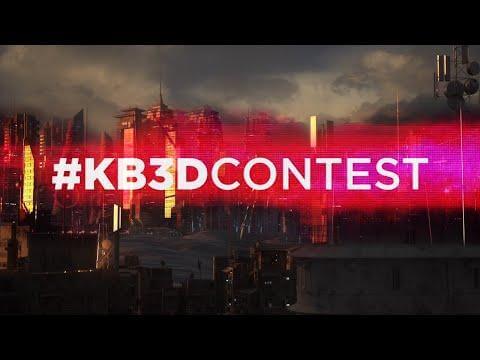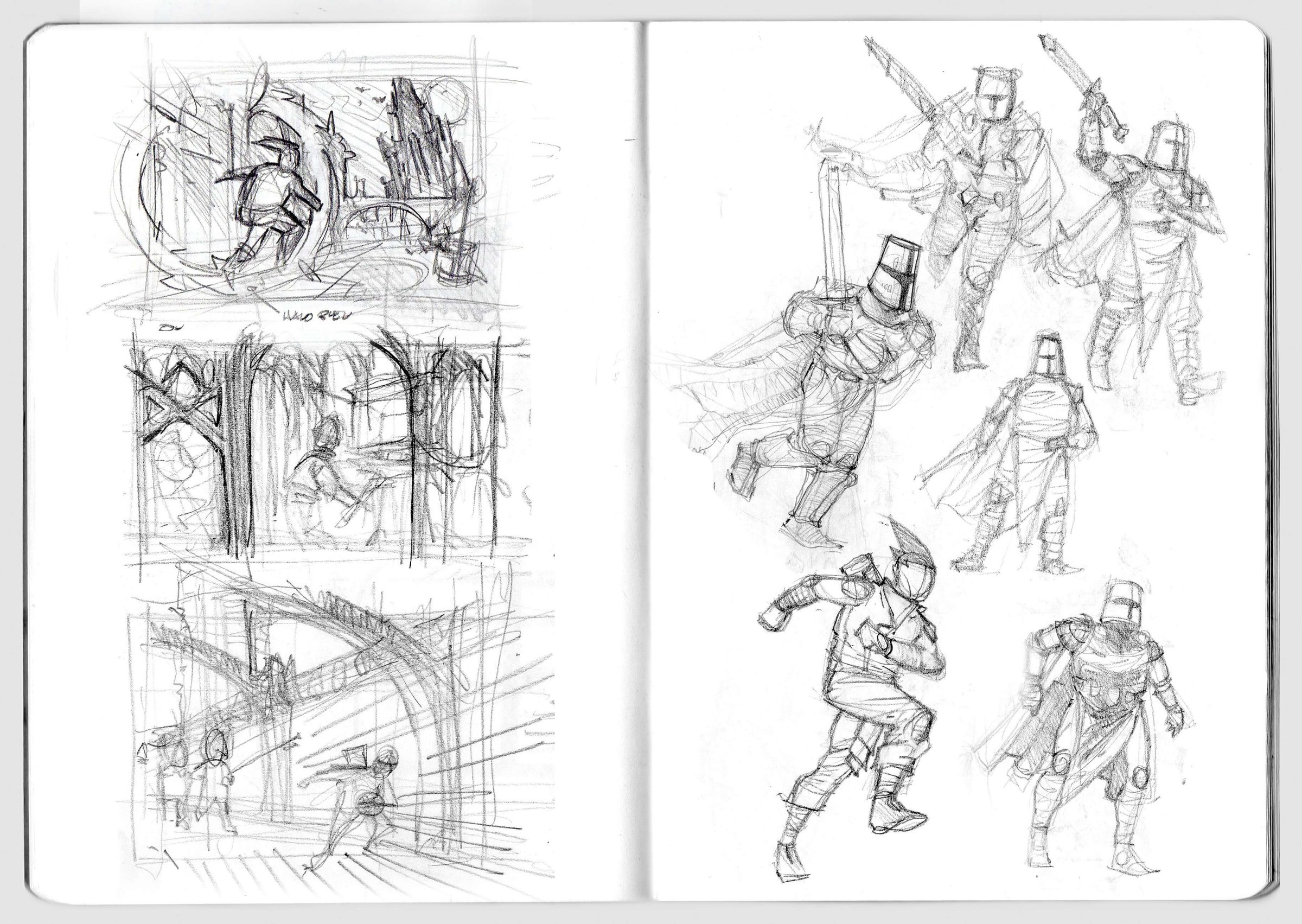
How long have you been an artist for, Mitchell? What is your “origin story”?
It started as soon as I could hold a crayon. Growing up in the "pre-internet" 70s and 80s, I would spend a lot of time at the cinema. Whether it was Sinbad, King Kong or seeing the 1977 Star Wars 12 times in the theater, I would be inspired and motivated to draw anywhere and everywhere. It soon became a way to be accepted at school. There would be a crowd around my desk at lunch time to watch me draw their favorite movie characters, dragons or spaceships. I entered a lot of art competitions (and still do). It was a way to "get on the playing field", become competitive and most of all, learn from what other successful people were doing.
After leaving art college at ACAD in the early 90s, I freelanced as an illustrator / designer / storyboard artist and eventually got hired by Global Television for 7 years of news graphics. During this period I sketched like a maniac, mostly at coffee shops, sometimes all night long. I self-published 2 books on coffee sketches, sold prints at art festivals, while still pursuing my goal of making a living as a concept artist. I had ideas for making my own films which in 2004 led me to extensive 3D training. This new digital platform opened up an infinite universe of creative possibilities, and still does to this day!
I’ve now worked over 15 years in film and television with credits as a concept artist, digital matte painter and 3D artist on numerous feature films and TV shows as well as through my freelance business for worldwide clients.
What's the inspiration behind your Utopia Ringworld?
I began doing cross-sections and human habitat stations when I was a kid and I was heavily influenced by the masters of the genre like Lary Niven, John Berkey, and Syd Mead. I entered a lot of science fairs and in 1981, aged 11, I was awarded the silver medal in my county for a ringed-space station project. In 2011, at Image Engine in Vancouver, I had the opportunity to help design and concept the space station for the movie Elysium, a true dream project for me. Here’s a piece of that approved “key art”, which I incorporated into some of my ideas for the Utopia Ringworld (which Mitchell submitted and placed as a finalist in the Utopia #kb3dcontest).

How do you start a project? What are your research methods? Or do you jump straight into sketching?
To start a project I gather references. Some of artists' work and others of "real-life" structures for comparison and mood lighting.
Art Reference & Real World References

I always start with sketches. These days my sketches are very small, quick scratches. Narrative is important. What kind of story is this, what info to reveal, what will it say to the viewer? Composition is roughed out and I decide lighting direction and where shadows will be cast.

So what is this piece portraying? What is the emotion you wanted to evoke?
The emotion I wanted to evoke with the Utopia kit was a prefabricated world operating as part habitat, part machine. The centrifugal, artificial gravity life-support structure being "the machine", adorned with agriculture, roads, resorts, hospitals, etc. I wanted the atmosphere thick and heavy, with opulent spec in highly over-engineered areas. Emotional escapism....a futuristic ark …balancing technology and climate in an artificial environment.
Please take us through a step by step as to how you created this Ringworld.
I typically use Maya for 3D. I assembled my favorite buildings from the Utopia kit into rough city blocks. My favorite here is the sloped tower, which I stretched with lattices. I combined another building on top to create a massive tower. I also mirrored it to create a subterranean section.


Kitbashing gets a lot of detailed objects configured in a very short period of time. It’s like a digital Lego set.
Once I have a good selection of elements, I then create a huge circular bend deformer. This will be the ring world environment.

Time consuming but rewarding, I assign each element to the bend-deformer and as I move the elements in z-direction they will stick to the curve of the terrain. With the sketch as a guide, cameras are positioned and manipulated until I get the desired look. Here are various WIP angles of the build.

I sculpted a bit of terrain, made lakes and reflective pools, and dropped them onto the bend deformer. I have also used elements from other KitBash3d kits here...the Greebles kit, and also Vitaly Bulgarov's towers.
To get started, I throw in some global lighting, and strategically place other lights in to help me achieve the look I’m going for. In this case, I added a directional light screen right. This helped me get some nice rim lighting.
I usually want to get painting as soon as possible so I have my shortlist of necessary renders (AO, diffuse, beauty, spec, indirect spec, shadow mask, ID and independent lighting renders when needed).
I usually render 4K .exr’s, for color resolution, lighting information and I’ll render as many masks as needed to help separate elements in the painting. Various density and Y-depth renders help out immensely with scale. Like making a “3D render sandwich” for photoshop.

This sort of terrain is challenging because of the curve. Dropping in a nice earthly picture rarely works. The challenge is that the atmospheric density is in a different place than on earth.
Things recede into the distance near the middle, but because it’s a ring, things reappear in clarity coming out of the middle to the top. Because of this, the 3D can only take you so far and you have to make it up with a good understanding of that atmospheric phenomena.
The final paint incorporates hi-res photo imagery from my resource library. To add photo imagery to the curve, puppet warp is used considerably. Layers get color balanced and coordinated in groups. Further texture and decals are overlayed and strategic glows applied to finish.

And finally, why do you make art?
I can’t recall a time that I didn’t communicate things artistically. Not just a hobby or something to take in a course. It’s what I do, what I am. I’ve learned that though there are many tools to bring out the artistic message, the 'idea' is still the most important. For me drawing has the command of that communication, but I’ve found a way to translate the sketches into a 3D form. I'm never quite satisfied with what I've already created, because there’s still so much more to come.
---

Mitchell Stuart is a Scottish / Canadian artist living in Vancouver, BC, Canada, currently working as lead concept artist at Artifex Studios and freelance for hire. His clients include Image Engine, Wizards of the Coast, Rocket Science VFX, Artifex Studios, FuseFX, BBC ScienceWorld, Mavericks VFX, Intelligent Creatures, and many more. You can find out more about Mitchell on his ArtStation and Linkedin.




